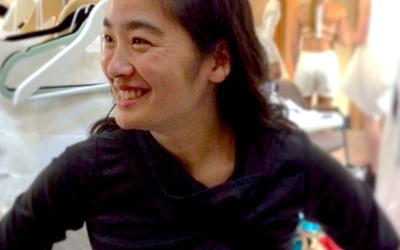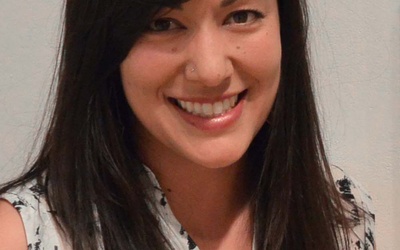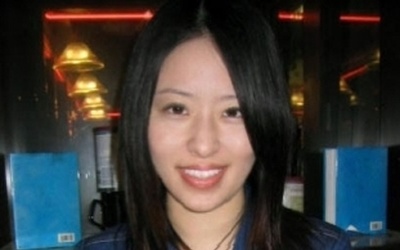Canadian Nikkei Series

The inspiration for this new Canadian Nikkei interview series is the observance that the gulf between the pre-WW2 Japanese Canadian community and the Shin Ijusha one (post-WW2) has grown tremendously.
Being “Nikkei” no longer means that one is only of Japanese descent anymore. It is far more likely that Nikkei today are of mixed cultural heritage with names like O’Mara or Hope, can’t speak Japanese and have varying degrees of knowledge about Japan.
It is therefore the aim of this series to pose ideas, challenge some and to engage with other like-minded Discover Nikkei followers in a meaningful discussion that will help us to better understand ourselves.
Canadian Nikkei will introduce you to many Nikkei who I have had the good fortune to come into contact with over the past 20 years here and in Japan.
Having a common identity is what united the Issei, the first Japanese to arrive in Canada, more than 100 years ago. Even in 2014, it is the remnants of that noble community that is what still binds our community today.
Ultimately, it is the goal of this series to begin a larger online conversation that will help to inform the larger global community about who we are in 2014 and where we might be heading to in the future.
Stories from this series
Hamilton Fashion Designer HITOKOO - Part 1
May 27, 2015 • Norm Masaji Ibuki
“My craft practise connects me through lineage, to my ancestors. As I make, I think about how my maker hands connect me across the ocean divide beyond land and time.” —fashion designer Hitoko Okada Growing up Nikkei in the cultural vacuum of a small rural community outside Toronto in the 1970s, one had to struggle for every scrap of positiveness that could be found in being of Japanese descent. This was well before anything “Japanese” was ever considered “cool”. I …
Toronto Artist Emma Nishimura: Mapping Out Nikkei Identity
April 7, 2015 • Norm Masaji Ibuki
The black person is the protagonist in most of my paintings. I realized that I didn’t see many paintings with black people in them. —Artist Jean-Michel Basquiat (1960–1988) One thing that I have learned in my own ponderings about my identity of which “Nikkeiness” is a significant part, it is that tracing the sources to the essence of who and what we are …
Educating Kana: PhD Student Studies Canadian Nikkei Education
Jan. 20, 2015 • Norm Masaji Ibuki
What, if anything, makes us uniquely Canadian Nikkei? In many ways, we are very much like Nikkei in the United States as we’ve grown up in similar cultural environments, schools, churches and even immigrated from the same places in Japan. Our histories around World War Two are vastly different in some ways but starkly different when it comes to the military duty (American Nikkei were allowed to fight and did so with distinction versus Canadians who at the behest of the …
Vancouver Shakuhachi master and Tonari Gumi Co-Founder Takeo Yamashiro ~ Part 2
Dec. 31, 2014 • Norm Masaji Ibuki
Read Part 1 >> Were you ever drawn to any other traditional Japanese instruments like the taiko? Well, it looks to me that today’s taiko players take a totally different approach to training themselves. Mr. Daihachi Oguchi, a jazz percussionist, considered to be responsible for transforming O-suwa style ceremonial taiko into a stage performing art form had yet to organize his group when I was in Japan. The first taiko performance in Vancouver was by “Ryujin Daiko” from Fukui-ken at …
Vancouver Shakuhachi master and Tonari Gumi Co-Founder Takeo Yamashiro ~ Part 1
Dec. 30, 2014 • Norm Masaji Ibuki
While I have never met Takeo Yamashiro in person, he seems familiar to me in a way that good friends are even the first time you meet them. Now, I had heard of Takeo even when I was living on Bowen Island in British Columbia and in the BC Kootenays in the early 1990s. He was the “Japanese flute player” (shakuhachi). That in itself was an exotic designation as the playing of traditional Japanese music was something that few non-Japanese …
Junji Nishihata: Following Jesse’s Path - Part 2
Oct. 14, 2014 • Norm Masaji Ibuki
Read Part 1 >>Quebecers seem to have a special relationship and interest with Japanese culture. Is this something that you recognize too? Quebec is the one province in Canada that consumes the most Japanese goods. In terms of dollar value, the bulk of this is cars and electronics, but anime and manga were available here that were not shown in the rest of Canada. And historically, Quebecers were the first Canadians to visit Japan after its opening by Admiral Perry …








